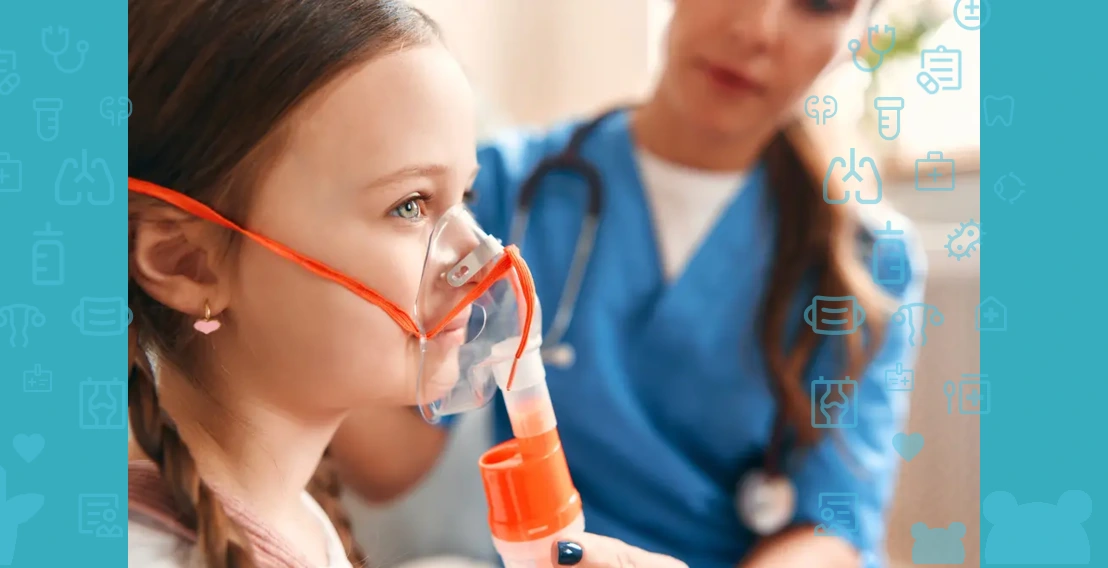Using a nebulizer at a temperature is not correct, but possible if necessary at a temperature of up to 37.5. However, nebulizer therapy is one of the effective methods of facilitating breathing and relieving unpleasant symptoms in certain respiratory diseases. This method makes it possible to deliver medications directly to the respiratory tract, which significantly speeds up the treatment process and alleviates the patient's condition.
Why do you need a nebulizer?
A nebulizer is a medical device that converts liquid medications into a finely dispersed aerosol, which promotes better penetration of active ingredients into the bronchi and lungs.
A nebulizer is used for:
- treatment of respiratory diseases (obstructive bronchitis, laryngitis, bronchial asthma);
- liquefaction and excretion of phlegm;
- reducing inflammation in the respiratory system.
Types of nebulizers
Several types of nebulizers are used in medicine:
- Compressor. Operates on compressed air. Can be used for all types of medicinal solutions.
- Ultrasonic. Converts liquid into an aerosol using high-frequency (ultrasonic) vibrations. Not suitable for antibiotics, hormonal drugs, and some other medications.
- Mesh nebulizers (membrane, electronic mesh). A vibrating membrane with microscopic holes is used to form an aerosol. They are characterized by maximum atomization efficiency.
Main qualities of the nebulizer:
- converts liquid medications into a finely dispersed aerosol;
- creates very small (1-5 microns) aerosol particles;
- ensures the deepest penetration of the aerosol into the respiratory tract.
Nebulizer therapy is an effective method of delivering medication directly to a child's airways. However, it is important to remember that the use of a nebulizer and the medications administered through it should be coordinated with a pediatrician to avoid possible complications.
How does a nebulizer work?

Liquid medications are poured into a special chamber where they are converted into an aerosol. The resulting aerosol is delivered to the patient's airways through a mask or mouthpiece.
How to use a nebulizer?
First, you need to prime the device by pouring the medicinal solution (usually 2-4 ml) into a special reservoir. Then, take a comfortable position (sitting, with a straight back), turn on the nebulizer and inhale the aerosol using a mask or mouthpiece. After the procedure, turn off the device, rinse and dry the parts.
What can be put in a nebulizer?
It is allowed to fill the nebulizer with:
- Saline solution (0.9% NaCl). Serves as a base for diluting medications.
- Bronchodilators (salbutamol, ventolin). Used for bronchial asthma, lower airway obstruction
- Anti-inflammatory drugs (budesonide). Used for inflammatory diseases of the respiratory system. What should not be put in a nebulizer?
What can't you put in a nebulizer?
It is forbidden to pour any medicines\solutions\substances into the nebulizer that are not intended for inhalation therapy through a nebulizer. This can lead to serious consequences and allergic reactions!
You cannot mix different medications without a doctor's prescription!
How to fill an inhaler?
The specifics of filling depend on the type of device. But the basic principle is similar for all nebulizers. You need to open the reservoir, pour in the required amount of medication and close the reservoir. For accurate dosing, it is recommended to use a sterile syringe.
How to breathe through a nebulizer?
Breathe calmly and deeply. Inhale, hold your breath for 1-2 seconds, then exhale. Inhale through your mouth and exhale through your nose. Adults mainly use a mouthpiece. Masks are recommended for children.
Does an inhaler help with a runny nose?
No
What to breathe through an inhaler when coughing?
Only a doctor should prescribe treatment through a nebulizer in cases where there are indications. Only certain diagnoses require inhalation in the treatment regimen. Therefore, in case of cough, a face-to-face consultation with a doctor is required, who will establish the cause and prescribe treatment
Answers to questions
Can I use a nebulizer for sinusitis?
No
Can I use a nebulizer for laryngitis?
Yes. Inhalations moisturize the inflamed laryngeal mucosa, reduce swelling of the vocal cords, make breathing easier, and speed up recovery.
Is it possible to breathe through an inhaler when you have a fever?
At low temperatures (up to 37.5°C), inhalations can be performed. At temperatures above 37.5°C, inhalations can increase the spread of infection. Therefore, it is better to refrain from the procedure so as not to worsen the general condition.
When should you not do inhalations?
Inhalations are contraindicated in many conditions, for example:
- individual intolerance to drugs;
- high temperature (above 37.5°C);
- hemoptysis, nosebleeds;
- spontaneous pneumothorax;
- uncompensated heart failure;
- recent myocardial infarction or stroke;
- severe hypertension.
From what age can inhalation be done to children?
Inhalations can be done to babies from the first days of life, but only as prescribed by a pediatrician . The dosage is selected by the doctor depending on the age of the child. Special masks are used for infants.
Can I do inhalations during pregnancy?
It is possible, but - after carefully weighing the benefits/risks and only under strict doctor's instructions
Can I do inhalations before going to bed?
The answer depends on the drug. Anti-inflammatory drugs in the form of inhalation before bedtime usually do not harm. Procedures with bronchodilators can cause excitement or increased expectoration. Therefore, they are better to carry out 1-2 hours before bedtime.
How many times a day should you inhale?
The number of inhalations depends on the type of drug, the severity of the disease, and the doctor's recommendations. Anti-inflammatory drugs are used 1-2 times a day, bronchodilators and mucolytics - 2-3 times a day. In acute conditions, the doctor may increase the number of inhalations to 4-6 times a day.
How long do inhalations take?
The duration of the procedure depends on the type of nebulizer, the volume of the solution, and the patient's age. In most cases, inhalation is performed for 3-10 minutes (optimally - until the solution is completely used up).
